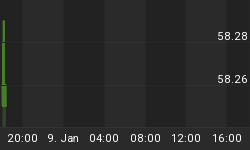Editor's note: This article is from Elliott Wave International's brand-new investment report, "U.S. Investors Face a Giant, Historic Bubble." It originally appeared in the April issue of The Elliott Wave Financial Forecast, published March 27, 2015. For a limited-time, EWI has agreed to give our readers exclusive free access to the full report. Please click here to read it now.
In March, we covered the return to a popular fascination with technology.
The striking resemblance to 2000's technology mania is not going unnoticed. How can it? With the NASDAQ's much heralded return to 5000 and magazine covers proclaiming "Google Wants You To Live Forever," concern about an "asset bubble" is being raised. But this is actually another throwback to early March 2000, when the NASDAQ reached its all-time high and the Financial Forecast remarked on a "public ambivalence toward warnings of any kind."
The March issue of The Elliott Wave Theorist explains that while people may remember some of the details, they "forget their prior mood and rationalize present extremes into normality."
This March 7 headline from a major financial paper offers a perfect example of how this "normalization" works: "Forget 2000. It's a Different Investing Ballgame." Really? Yeah, really. "It really is different this time," says another. "The crazy valuations seen at the turn of the millennium -- when silly concepts, such as collecting eyeballs, attracted billions of dollars from breathless speculators wanting to get in on the new, new thing -- are absent."
There's just one problem with this assessment, it's not accurate. Here's the reality, or should we say surreality, as depicted in Bloomberg on March 17:
The Fuzzy, Insane Math That's Creating
So Many Billion-Dollar Tech Companies
The article discloses how companies are shooting to "astronomical valuations," mostly with Internet ideas that capture people's bullish imaginations and, as in 2000, cause them to look beyond mundane things such as cash flow and profits. Once again, such stone-age metrics are less important than "the number of people using the product" and "whether they pay for it. Investors salivate over what's called 'hockey-stick' growth curves, indicating massive uptake. Costs, especially operations costs, are largely ignored."
As in 2000, the fever has been spreading fast. According to Bloomberg, start-ups with billion-dollar valuations were once dubbed "unicorns" because of their rarity. Now, Bloomberg counts more than 50 of them. Many have expanded ten-fold, so a new buzzword, "decacorn," now applies to those with capitalizations of more than "$10 billion, which includes Airbnb, Dropbox, Pinterest, Snapchat and Uber."
Of course, the driving force behind many of these investments is the same--a fear of missing out (FOMO).
"A severe case of FOMO can cause some to do crazy things to get into the hottest deals," says Bloomberg. This is exactly what the Financial Forecast said in March 2000, when we explained why people fail to heed ample warnings in the final throes of a mania: "Acting on such an opinion might mean missing something on the upside. 'The average person must ride it out,' says [a] Nobel Prize winner. Quotes such as these will deserve preservation in bronze when the bear market is mature." Clearly, that time still lies ahead.
For compelling Elliott wave evidence of a culmination of the Mania Era, see the five-wave advance in the share price of the current technology leader, Apple Inc., on page 3 of the March Elliott Wave Theorist. As the Theorist notes, after rising more than 14,500% over the past 12 years, S&P Dow Jones Indices added the stock to the Dow Jones Industrial Average on March 19.
This is one more remarkable parallel to the prior technology mania, as Microsoft was added to the Dow Industrials just prior to its January 2000 top. Here's how EWFF interpreted its addition in November 1999:
The ultimate concession to technology is due November 2, when Microsoft will be inducted into the Dow Jones Industrial Average. For most of the bull market, the world's most dominant stock was excluded from the world's premier blue-chip average. But just as RCA was added to the Dow in October 1928 (and removed in 1932), Microsoft has assumed its rightful place at the head of the pack, in time to lead the way down.
Apple has just been acknowledged in the same way and for the same reason. The pressure to pile onto the technology bandwagon has proved irresistible to the Dow's purveyors. This has generally happened when the most important stock market reversals were at hand.
Editor's note: This article is from Elliott Wave International's brand-new investment report, "U.S. Investors Face a Giant, Historic Bubble." It originally appeared in the April issue of The Elliott Wave Financial Forecast, published March 27, 2015. For a limited-time, EWI has agreed to give our readers exclusive free access to the full report. Please click here to read it now.
















